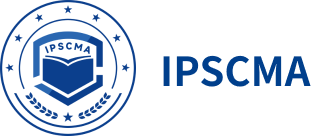Product Selection and Procurement Specialist Exam Guide
Occupational Code: 24-03-07-09
(2024 Edition)
Formulated by Hong Kong Supply Chain Management Certification Association
Certification 1
Proportion (%) | |
The core role and strategic value of merchandisers | 5 |
The vertical and horizontal development paths and capability requirements for merchandisers | 10 |
The impact of new technologies on merchandising work, new roles and value of merchandisers in the future | 5 |
Main contents and methods of market research, data-driven merchandising ideas | 10 |
Principles, processes and methodologies for product selection and planning | 15 |
Key aspects of supplier development, evaluation, selection, and performance management | 15 |
Cost composition factors, calculation methods, price negotiation skills | 10 |
Commonly used data analysis tools and methods, gaining insights from multidimensional data | 10 |
Communication strategies, negotiation skills and conflict resolution in cross-departmental collaboration | 5 |
Grasping innovative merchandising practices under new e-commerce business models | 5 |
Insights into new consumer demands, optimizing product mix | 5 |
Differentiated merchandising, supply chain risk control strategies | 5 |
Chapter-level Focus | Proportion (%) |
The strategic position of merchandisers in enterprises | 5 |
Career development path for merchandisers | 10 |
Prospect of future development for merchandisers | 5 |
Market research and trend analysis | 10 |
Product selection and planning | 15 |
Supplier development and management | 15 |
Precise cost accounting ability | 10 |
Proficient data analysis skills | 10 |
Efficient communication and coordination ability | 5 |
New challenges in merchandising amid e-commerce industry changes | 5 |
New ideas for merchandising under the trend of diversified consumer demand | 5 |
Intensified market competition and supply chain risk response | 5 |
Certification 2
Exam Focus | Proportion (%) |
Basic concepts of supply chain such as definition, objectives, processes; strategic level content such as supply chain strategy planning, network design, strategic transformation. | 15 |
S&OP construction, plan coordination; strategic position of procurement, supplier management, procurement negotiation; core contents of the plan execution stage such as inventory cost, inventory strategy, order quantity and safety stock determination. | 30 |
Focus of the delivery section such as warehouse layout and operation optimization; distribution network, route optimization and service management; transportation mode selection, channel layout and risk control.。 | 25 |
Supply chain KPI design, performance evaluation mechanism; supply chain risk identification, assessment and control; supply chain process optimization methods, continuous improvement content such as lean and agile supply chain reengineering. | 20 |
Characteristics of digital supply chain, maturity and data-driven decision making; application of artificial intelligence in supply chain demand forecasting, planning optimization, intelligent execution, etc. | 10 |
Chapter-level Focus | Proportion (%) |
The connotation and extension of supply chain | 15 |
Strategic planning of supply chain operation | |
Planning coordination: the art of multi-dimensional game | 30 |
Procurement management: the integration and driving force of external resources | |
Inventory management: the pursuit of certainty in uncertainty | |
Warehouse management: taming the space-time black hole | 25 |
Distribution management: relay of the last mile | |
Transportation management: smooth and orderly logistics arteries | |
Constructing an end-to-end supply chain performance evaluation system | 20 |
Supply chain risk management: surviving in uncertainty | |
Supply chain process optimization and reengineering: the unremitting pursuit of "zero inventory" | |
Digital supply chain: from automation to intelligence | 10 |
Application of artificial intelligence in supply chain |
Merchandiser Exam Guide
Occupational Code: 24-03-07-09
(2024 Edition)
Formulated by Hong Kong Supply Chain Management Certification Association
Proportion (%) | |
The core role and strategic value of merchandisers | 5 |
The vertical and horizontal development paths and capability requirements for merchandisers | 10 |
The impact of new technologies on merchandising work, new roles and value of merchandisers in the future | 5 |
Main contents and methods of market research, data-driven merchandising ideas | 10 |
Principles, processes and methodologies for product selection and planning | 15 |
Key aspects of supplier development, evaluation, selection, and performance management | 15 |
Cost composition factors, calculation methods, price negotiation skills | 10 |
Commonly used data analysis tools and methods, gaining insights from multidimensional data | 10 |
Communication strategies, negotiation skills and conflict resolution in cross-departmental collaboration | 5 |
Grasping innovative merchandising practices under new e-commerce business models | 5 |
Insights into new consumer demands, optimizing product mix | 5 |
Differentiated merchandising, supply chain risk control strategies | 5 |
Chapter-level Focus | Proportion (%) |
The strategic position of merchandisers in enterprises | 5 |
Career development path for merchandisers | 10 |
Prospect of future development for merchandisers | 5 |
Market research and trend analysis | 10 |
Product selection and planning | 15 |
Supplier development and management | 15 |
Precise cost accounting ability | 10 |
Proficient data analysis skills | 10 |
Efficient communication and coordination ability | 5 |
New challenges in merchandising amid e-commerce industry changes | 5 |
New ideas for merchandising under the trend of diversified consumer demand | 5 |
Intensified market competition and supply chain risk response | 5 |
